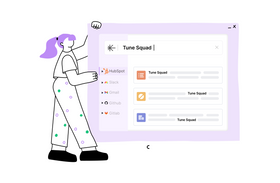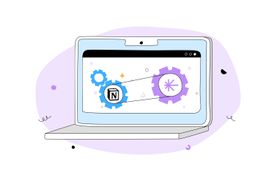Intranet Governance: 4 Key Considerations for Intranet Strategy
Updated May 22, 2023

Have you ever wondered how to make your company's intranet more than just a digital filing cabinet? Welcome to the world of intranet governance. It's the secret sauce that turns a run-of-the-mill internal network into a powerful tool for achieving your organizational objectives.
Why Does Intranet Governance Matter?
An intranet is a secure network used by organizations to distribute resources and share information among employees. Without a solid intranet governance strategy, your intranet could end up cluttered, unorganized, and barely used—wasting precious company resources. To prevent this, you need an intranet strategy that outlines user training, usage monitoring, and other crucial aspects.
One of the most important elements of this strategy is the intranet policy. This document provides employees with information on what the intranet can and cannot be used for, aligning with the system's intended uses and any relevant legislative requirements.
To emphasize the importance of a well-managed intranet, let's look at some potential risks of an unmanaged one:
- Content becomes unorganized and virtually useless
- Resources get cluttered, making it hard for employees to find what they need
- Data is shared with unauthorized persons due to improper access
Sounds like a mess, doesn't it? But worry not—here are four key steps to building a successful intranet strategy.
4 Considerations For a Successful Intranet Strategy
When creating an intranet strategy, here are four key considerations to think about:
- Define Your Intranet Objectives
- Evaluate the State of Your Current Intranet
- Prioritize Your Strategy
- Assemble Your Intranet Crew
1. Define Your Intranet Objectives
The first step is to outline your intranet's purpose and objectives. Is your intranet a digital workplace for fostering collaboration and communication? Or is it primarily a central information and communication platform?
Knowing what you want from your intranet will guide the features you need and the technology you choose. For instance, here are some common objectives that an intranet can help businesses achieve:
- Improved communication
- Higher workplace engagement
- Increased efficiency
- Greater collaboration
- More effective training
✶ Learn all about the differences between Intranet and Extranet
2. Evaluate the State of Your Current Intranet
If you already have an intranet, it's crucial to assess its current state. This analysis will help you identify gaps and areas of concern.
Here are some questions to ponder:
- How efficient is the current intranet?
- Are there underused or outdated features?
- Does your intranet provide employees with the information they need?
- Does it help increase productivity?
- Is it effective in terms of communication and collaboration?
- Can remote or hybrid workplace employees access your intranet?
By understanding your current situation and seeking employee feedback, you can start shaping an effective strategy for your intranet and improve the overall employee experience.
PRO TIP:
Employee feedback is crucial for improving your intranet. Consider conducting regular surveys or creating a feedback form on your intranet.
3. Prioritize Your Strategy
After defining your objectives and assessing your current intranet, prioritize the areas that need attention first. Identify business processes you want to improve and map out functions and features to help you meet those goals. For example, if reducing paperwork is a priority, consider including digital document management systems in your strategy.
Remember to involve key stakeholders in this process to ensure alignment with business goals. Also, review company materials such as your vision statement, yearly business plans, and reports to help shape your intranet strategy.
Did you know?
Intranets aren't just for large corporations. Small businesses can also benefit from an intranet to foster collaboration and streamline processes.
4. Assemble Your Intranet Crew
Intranet governance isn't a one-person job. It requires collaboration between multiple teams. Therefore, form a core crew comprising representatives from departments that need to be involved. These representatives should clearly understand their tasks and responsibilities regarding the intranet. This includes managing the intranet, making regular updates, and training new users.
PRO TIP:
An engaging intranet encourages user participation. Consider incorporating interactive elements like forums, polls, or social feeds to increase engagement and improve productivity.
Leveraging Your Intranet for Success
By assessing your current intranet, prioritizing objectives, and assembling a dedicated intranet crew, you're on the path to leveraging your intranet as a powerful tool for your organization. This will improve communication, efficiency, and collaboration—essential elements for a successful business in today's digital age.
But to take your intranet to the next level, you need a tool designed to supercharge your intranet search. That's where Unleash comes in.
It's all you need for fast, efficient knowledge management and better collaboration between teams—plus, it’s intuitive and easy to use. Unleash searches every folder and application to surface the information you need, helping you improve productivity and increase efficiency.





